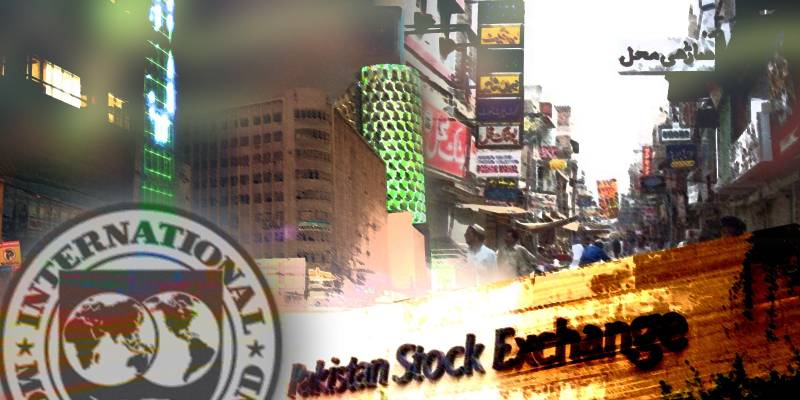
Hope springs eternal for Pakistan’s policymakers despite the harsh economic realities. This time, it rests on the ongoing crackdown on currency, commodity smuggling, and power theft by criminal mafias and individuals. The establishment expects to contain public dissatisfaction from high inflation and economic decline.
Undoubtedly, smuggling, theft, and the undocumented economy are grave problems facing the country. But containing criminal activities alone will not solve the worst economic crisis in decades. The burden of sizable fiscal deficits and accumulated public debt have hobbled the economy.
Pakistan seems stuck in a time warp of when its strategic location earned it generous aid and loans from wealthy Western countries for favors. It helped the country grow industries and infrastructure quickly but did not bring political and economic stability. The reliance on rents also had harmful effects like elite corruption, aid dependence, and loss of sovereignty.
The rentier state favored a consumption-led, import-intensive growth model that proved unsustainable. It trapped the country in a vicious cycle of fiscal deficits and perpetual borrowing. Capability limitations, resource constraints, and heightened vulnerabilities hid behind flowing rents. Elite capture impeded much-needed land and tax reforms vital to building a fairer economy and society.
Donors supported fake stability under military rule instead of genuine democracy. It led to bad outcomes: lavish military aid gave rise to wars and adventurism, and reliance on the Western bloc limited foreign policy options. The establishment became the fulcrum of the state, politics, economy, and society, but it left democracy behind.
Today, an undeniable reality is that the rentier era is over. The reform of the rentier state and economy is long overdue. Pakistan must make meaningful structural reforms for survival and progress. Temporary measures cannot be a substitute for long-term solutions.
Pakistan seems stuck in a time warp of when its strategic location earned it generous aid and loans from wealthy Western countries for favors. It helped the country grow industries and infrastructure quickly but did not bring political and economic stability.
However, significant obstacles make the change from being a rentier to a competitive economy unlikely in the near term. A snapshot of the challenges: Pakistan’s per capita growth rate has averaged a meager 3 percent over the last 30 years. The population increased a whopping 2 percent per annum in the same period.
The country has been under the IMF straightjacket almost continuously since the late 1980s. It has provided some macroeconomic stability but at the cost of increased inequality and economic contraction.
Gross domestic savings fell from 16 percent in 2000 to just over 5 percent in 2019. It has picked up but remains well below the required rate to finance investments to spur higher growth. Only a tiny elite can afford savings and investments, while the majority have nothing to save.
Successive governments have run fiscal deficits and depended on foreign aid to fill the gap. It left no room for capital investments and spending on human development. The fallout from COVID-19 and the war in Ukraine has adversely affected the country. And the fragile economy has proven very vulnerable to recurring volatility in global commodity markets.
It is time for decisive action to pull back Pakistan from the path of financial ruin. Now that the country cannot count on foreign aid, leaders must not continue to put off much-needed economic reforms. It must rely solely on national resources and foreign investments because rents have dried up.
Constant political instability, religious extremism, and terrorism drive away investors. The country must improve its image globally, offer a favorable tax regime, and ease of doing business to secure investments.
Yet, there is little evidence that many setbacks have forced a critical review of national priorities. The economy has withered, but decision-makers have kept faith with the failed policies of the rentier period. Breaking the cycle of bailouts, loans, and policy failures is a tough challenge.
Pakistan has to transition to a new economic model. It must encourage technological advancement, sustainable infrastructure investment, and resource efficiency. Its primary focus must be strong, sustainable, balanced, and inclusive growth.
Rebuilding investor confidence, boosting the economy, and managing public debt is critical. Debt restructuring, privatization, and defense spending reduction are ways to improve financial flexibility. The export sector needs new ideas to earn foreign exchange without relying on government subsidies and protection.
Constant political instability, religious extremism, and terrorism drive away investors. The country must improve its image globally, offer a favorable tax regime, and ease of doing business to secure investments. Investors need financial incentives, good infrastructure, and investment protection to invest in labor-intensive manufacturing.
The future health of the economy depends on an open and tolerant society. Political stability and social harmony are vital. And peace and trade with all neighbors are essential despite political differences and territorial disputes.
There is no perfect soft landing on the horizon. The acute economic crisis may pass, but the chronic challenges will remain. Setting priorities is of critical importance. Otherwise, economic reforms are doomed to failure.

